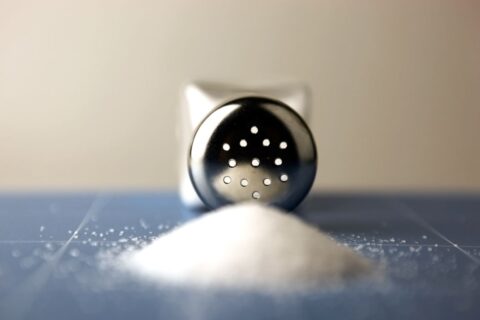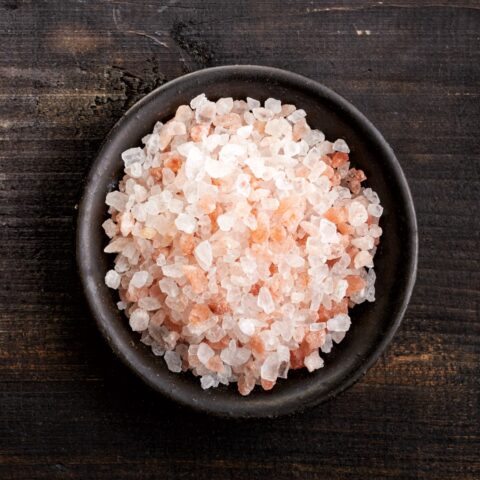By Stephen T. Sinatra, M.D., F.A.C.C., F.A.C.N., C.N.S., C.B.T.
Even though I’m a cardiologist, you won’t hear me telling anyone to totally avoid salt. Despite what half the doctors in this country will lead you to believe, salt – as the main source of sodium in our diets – is essential to life.
All unprocessed salt has a similar chemical makeup—it consists mainly of sodium and chloride, as well as additional trace minerals like calcium, potassium, and magnesium. Our bodies rely on these minerals to work together to support proper function of the brain, muscles, nerves, and other parts of the body.
However, there are a couple things you need to be careful about when it comes to salt.
The first is how much salt you consume every day. Too much can lead to high blood pressure and water retention, which is why so many physicians recommend low-salt diets to heart patients. (I believe there’s a “sweet spot” with salt: 2 to 3 grams per day. Too little sodium can be as harmful as too much.)
The second is the types of salt you should include in your diet. Gone are the days when the only option in grocery stores was plain old table salt. Today, various natural salts are not only readily available, but truly excellent choices. Nutritionally, they’re far superior to table salt, and their flavors and nuanced textures can’t be beat.
Here, I’ll tell you about a few of my favorite natural salts and why you should consider adding them to your diet. But to understand why those options are so great, you need to know why table salt isn’t…
What Is Table Salt?
 Table salt is the most common type of salt for an ominous reason—it’s what you’ll find in very high quantities in practically every processed and fast food on the planet. This is one of the main reasons so many Americans unintentionally consume far more salt than they should.
Table salt is the most common type of salt for an ominous reason—it’s what you’ll find in very high quantities in practically every processed and fast food on the planet. This is one of the main reasons so many Americans unintentionally consume far more salt than they should.
Table salt is not ideal because it’s so heavily refined that all the good stuff is eliminated before it ever reaches your mouth. After the salt is mined from the ground, it’s heated to about 1,200 degrees F, which destroys most of the impurities—but also any beneficial trace minerals (minus the sodium and chloride). Some are added back in—most notably iodine, which is thought to improve thyroid health and function.
Another problem with table salt is that since it’s ground so finely, it can clump together. So manufacturers add anti-caking agents to keep it flowing freely. Table salt can contain many other additives as well, including fluoride, monosodium glutamate (MSG), and bleaching compounds to make it white.
Basically, the final product is an industrial hodge-podge of sodium chloride and chemicals, with no other health-promoting ingredients or characteristics. It should be noted that much of salt’s bad rap is because cardiovascular studies have used this form of refined table salt.
Natural salts, however, have a very different effect on the body.
Natural Salt: Healthier, Tastier, Better
 Unlike highly processed table salt, unrefined natural salts aren’t heated, manipulated, or altered in any way. This makes them rich sources of naturally occurring minerals and overall healthier products. While this doesn’t mean you should start shoveling endless amounts of natural salts into your mouth (because they’re still high in sodium), they are an infinitely better option than table salt.
Unlike highly processed table salt, unrefined natural salts aren’t heated, manipulated, or altered in any way. This makes them rich sources of naturally occurring minerals and overall healthier products. While this doesn’t mean you should start shoveling endless amounts of natural salts into your mouth (because they’re still high in sodium), they are an infinitely better option than table salt.
There are a few types of natural salt, including sea salt and Himalayan pink salt. I love them both for similar reasons.
Sea salt is produced from the evaporation of seawater. Though some sea salts are more processed (and you should avoid them), unrefined sea salt contains as many as 60 different trace minerals that are abundant in the seas and oceans. Some of these include potassium, bromine, boron, iron, zinc, magnesium, copper, silicon, and calcium.
Sea salt is also less ground up than table salt, so you get more of a burst of flavor when you use it. Some of the varieties of sea salt include Hawaiian, Australian, flaked, French fleur de sel and sel gris (gray sea salt), and crystalline. I’m a big fan of sel gris, in particular…Because it’s harvested from salt beds with clay, which give it a characteristic gray color and higher moisture content, it contains upwards of 100 different minerals. It is lower in sodium than most other salts and may actually be the most mineral-rich salt available.
Himalayan pink salt is one of the purest salts you can find. Mined from the salt beds in Pakistan, near the Western edge of the Himalayan mountain range, this natural salt is actually a kind of sea salt since it hails from an ancient sea that dried up eons ago. Himalayan pink salt is believed to contain more than 80 trace minerals, and actually gets it pretty red/pink color from a number of these elements, primarily iron oxide. Himalayan pink salt also contains lower amounts of sodium than table salt (87%, compared to table salt’s 97–98%).
The trace minerals found in both sea and Himalayan salt are minerals the body needs to preserve a healthy body pH, prevent dehydration, balance electrolytes, support brain, muscle, and nerve function, and aid in digestion and detoxification. Minerals also help strengthen bones, prevent muscle cramping, improve circulation, and even maintain healthy blood pressure. Some say they may even enhance kidney and gallbladder health and even boost libido. And even though we only use natural salt as a flavoring, when it comes to trace minerals, every little bit helps!
Make the Switch to Natural Salts
 I hope you now understand that salt, as a whole, isn’t the enemy. Only when it’s chemically processed and altered or consumed in excess does it become potentially detrimental to your health. By choosing unaltered, unrefined natural salts, you can feel confident that, if used in moderation, they can actually benefit your health—and provide your taste buds a real treat.
I hope you now understand that salt, as a whole, isn’t the enemy. Only when it’s chemically processed and altered or consumed in excess does it become potentially detrimental to your health. By choosing unaltered, unrefined natural salts, you can feel confident that, if used in moderation, they can actually benefit your health—and provide your taste buds a real treat.
Personally, I love the tastes of both sel gris and Himalayan pink salt—they make excellent finishing salts. And sea salt is great for cooking and baking. I encourage you to try them all to see which taste and texture you prefer. Or, better yet, find a high-quality salt blend that contains different salts from around the world.
From my heart to yours,

Stephen Sinatra, M.D., F.A.C.C., C.N.S.
© 2017 HeartMD Institute. All rights reserved. Originally published at Vervana.com.










